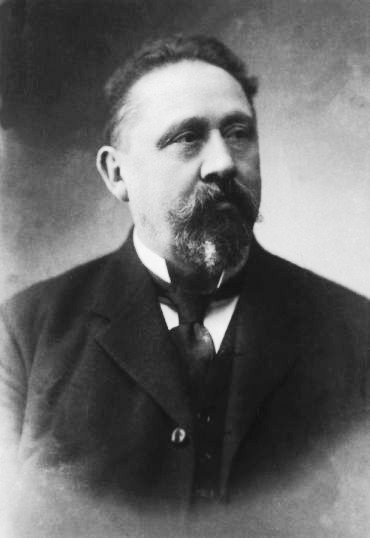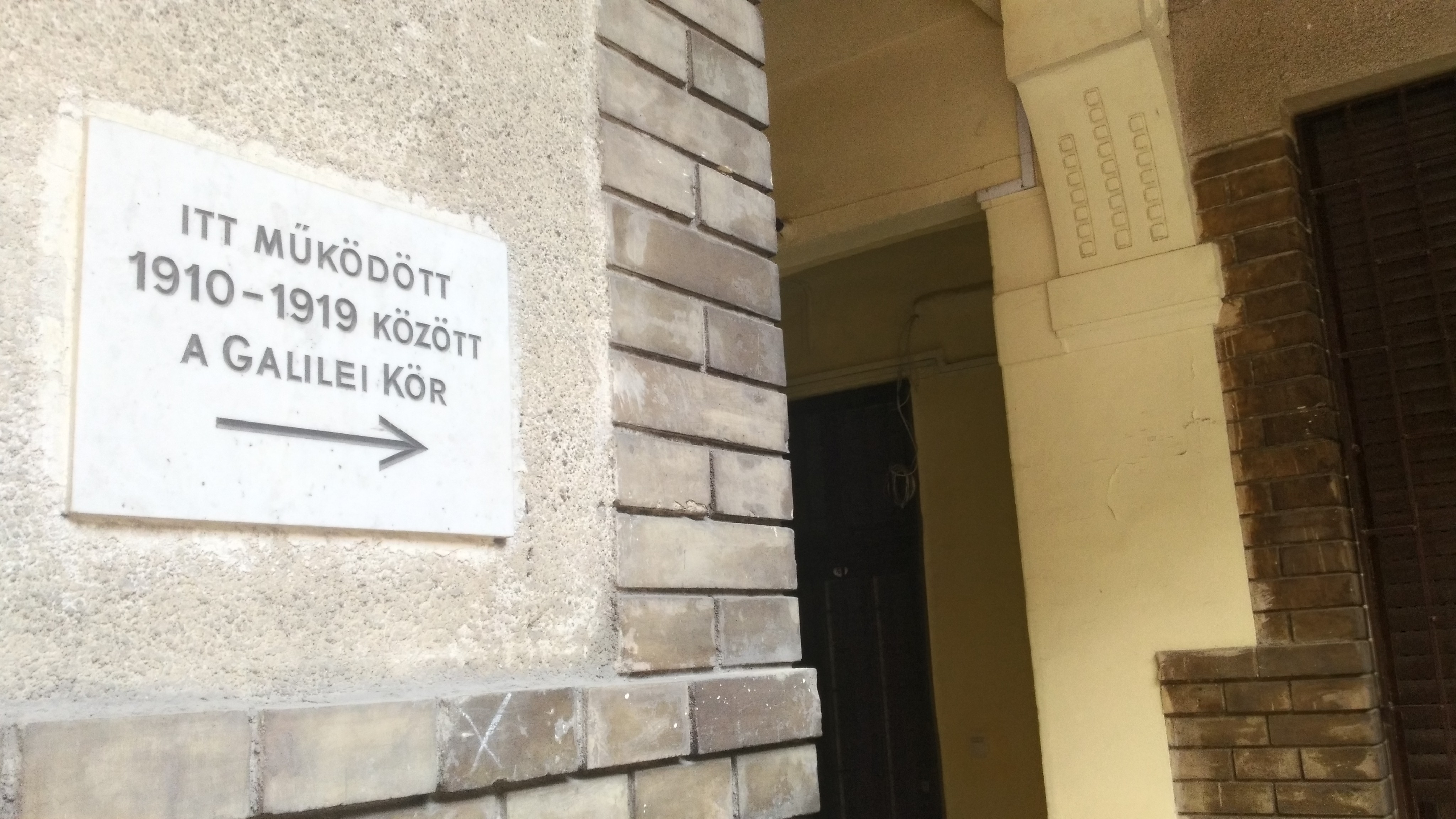|
Anker Palace
Anker Palace ( hu, Anker-palota) is a building in Terézváros, Budapest. It was built by Ignác Alpár in 1908 for a Viennese insurance company, the Anker Life and Pension Company. The building was built in the eclectic style and was completed in 1910. It faces on to Deák Ferenc Square. There are Doric columns on the facade and two statues of women with outstretched arms on the roof. Anker Köz Anker Köz (alley) runs in a curve around the rear of the building. The Galileo Circle The Galileo Circle (''Galilei Kör'') was an atheist-materialist student organization that functioned in Budapest between 1908 and 1919. Their center was located at the Anker Köz in Terézváros, Budapest. The circle had several subgroups with f ... was based here, 1910-1919. Notable residents * Geza Hofi * Léopold Szondi References {{Coord, 47.49785656907723, 19.0553552708005, display=title Buildings and structures in Budapest ... [...More Info...] [...Related Items...] OR: [Wikipedia] [Google] [Baidu] |
Terézváros
Terézváros (English: Theresa Town, German: Theresienstadt) is the District VI of Budapest, and was named after Queen Maria Theresa in 1777, who visited the neighbourhood 26 years earlier in 1751. The territory was first inhabited in the early 18th century when the old town of Pest (today: Inner City) was already fully built, so that people had to inhabit lands outside the city. Terézváros was one of the ten districts that were formed when the city of Budapest was created in 1873. Today Terézváros is the second in population density after the neighbouring Erzsébetváros. Terézváros is meanwhile the second smallest district (also the first being Erzsébetváros). Both districts are famous for their night life. Location Terézváros is located in the Pest side of Budapest. Neighbours of District VI are (clockwise from north): *District XIII * District XIV: Zugló * District VII: Erzsébetváros ("Elizabeth Town"), known of the historical Jewish quarter * District V: Belvá ... [...More Info...] [...Related Items...] OR: [Wikipedia] [Google] [Baidu] |
Budapest
Budapest (, ; ) is the capital and most populous city of Hungary. It is the ninth-largest city in the European Union by population within city limits and the second-largest city on the Danube river; the city has an estimated population of 1,752,286 over a land area of about . Budapest, which is both a city and county, forms the centre of the Budapest metropolitan area, which has an area of and a population of 3,303,786; it is a primate city, constituting 33% of the population of Hungary. The history of Budapest began when an early Celtic settlement transformed into the Roman town of Aquincum, the capital of Lower Pannonia. The Hungarians arrived in the territory in the late 9th century, but the area was pillaged by the Mongols in 1241–42. Re-established Buda became one of the centres of Renaissance humanist culture by the 15th century. The Battle of Mohács, in 1526, was followed by nearly 150 years of Ottoman rule. After the reconquest of Buda in 1686, the ... [...More Info...] [...Related Items...] OR: [Wikipedia] [Google] [Baidu] |
Ignác Alpár
Ignác Alpár József (born Schöckl József; 17 January 1855 in Pest – 27 April 1928 in Zürich) was a Hungarian architect.Ignác Alpár , retrieved 6 May 2012 Career Alpár began his career as a stonemason, then worked under architect . After completing formal studies in , he returned to |
Vienna
en, Viennese , iso_code = AT-9 , registration_plate = W , postal_code_type = Postal code , postal_code = , timezone = CET , utc_offset = +1 , timezone_DST = CEST , utc_offset_DST = +2 , blank_name = Vehicle registration , blank_info = W , blank1_name = GDP , blank1_info = € 96.5 billion (2020) , blank2_name = GDP per capita , blank2_info = € 50,400 (2020) , blank_name_sec1 = HDI (2019) , blank_info_sec1 = 0.947 · 1st of 9 , blank3_name = Seats in the Federal Council , blank3_info = , blank_name_sec2 = GeoTLD , blank_info_sec2 = .wien , website = , footnotes = , image_blank_emblem = Wien logo.svg , blank_emblem_size = Vienna ( ; german: Wien ; ba ... [...More Info...] [...Related Items...] OR: [Wikipedia] [Google] [Baidu] |
Eclectic Style
Eclecticism is a kind of mixed style in the fine arts: "the borrowing of a variety of styles from different sources and combining them" . Significantly, Eclecticism hardly ever constituted a specific style in art: it is characterized by the fact that it was not a particular style. In general, the term describes the combination in a single work of a variety of influences—mainly of elements from different historical styles in architecture, painting, and the graphic and decorative arts. In music the term used may be either eclecticism or polystylism. In the visual arts The term eclectic was first used by Johann Joachim Winckelmann to characterize the art of the Carracci, who incorporated in their paintings elements from the Renaissance and classical traditions. Indeed, Agostino, Annibale and Lodovico Carracci had tried to combine in their art Michelangelo's line, Titian's color, Correggio's chiaroscuro, and Raphael's symmetry and grace. In the 18th century, Sir Joshua Reynolds, hea ... [...More Info...] [...Related Items...] OR: [Wikipedia] [Google] [Baidu] |
Deák Ferenc Tér
The Deák Ferenc square (''Deák Ferenc tér''), named for Ferenc Deák, is a major intersection and transport junction in Budapest. Károly körút, Bajcsy-Zsilinszky út, Király utca, Deák Ferenc utca, and Harmincad utca converge here. Three lines of the Budapest Metro each converge on the station under the square. Tram lines 47 and 49 also originate from the square, as well as several bus lines. Deák Ferenc tér is a popular gathering for young people. Alcoholic beverages are sold at the grassy area, and it is common for Deák Ferenc tér to be populated until the midnight hours. Deák Tér is mentioned in ''Ending Theme'', a song by Swedish progressive metal band Pain of Salvation Pain of Salvation is a Swedish progressive metal band led by Daniel Gildenlöw, who is the band's main songwriter, lyricist, guitarist, and vocalist. Pain of Salvation's sound is characterised by riff-oriented guitar work, a broad vocal range, o .... References {{DEFAULTSORT:Deak Fere ... [...More Info...] [...Related Items...] OR: [Wikipedia] [Google] [Baidu] |
Doric Order
The Doric order was one of the three orders of ancient Greek and later Roman architecture; the other two canonical orders were the Ionic and the Corinthian. The Doric is most easily recognized by the simple circular capitals at the top of columns. Originating in the western Doric region of Greece, it is the earliest and, in its essence, the simplest of the orders, though still with complex details in the entablature above. The Greek Doric column was fluted or smooth-surfaced, and had no base, dropping straight into the stylobate or platform on which the temple or other building stood. The capital was a simple circular form, with some mouldings, under a square cushion that is very wide in early versions, but later more restrained. Above a plain architrave, the complexity comes in the frieze, where the two features originally unique to the Doric, the triglyph and gutta, are skeuomorphic memories of the beams and retaining pegs of the wooden constructions that preceded stone Do ... [...More Info...] [...Related Items...] OR: [Wikipedia] [Google] [Baidu] |
Galileo Circle
The Galileo Circle (''Galilei Kör'') was an atheist-materialist student organization that functioned in Budapest between 1908 and 1919. Their center was located at the Anker Köz in Terézváros, Budapest. The circle had several subgroups with four different world views: the radical liberals (they called themselves as "radical democrats"), the Marxists (they called it as "Revolutionary Socialists"), the anarcho-syndicalists and the socialists (social democrats). However they had common goals, which included the protection of free scientific research and thinking at universities, the cultivation of social sciences, the social assistance of poor students, the spread of anti-clericalist and atheist views, the support of anti-nationalism and promoting internationalism, the propagation of anti-alcoholism, the opposition to large estates and the "reorientation of Hungarian social perception". The circle was founded on November 22, 1908. This was in response to the attacks on Gy ... [...More Info...] [...Related Items...] OR: [Wikipedia] [Google] [Baidu] |
Léopold Szondi
Léopold Szondi ( hu, Szondi Lipót ; March 11, 1893 – January 24, 1986) was a Hungarian psychiatrist and psychoanalyst, psychopathologist and Professor of psychology. Founder of the concept of fate analysis. He is known for the psychological tool that bears his name, the Szondi test. The achievements of the scientist are: The Szondi test, Fate analysis and Fate psychology. Biography Szondi was born in city of Nyitra (in present-day Slovakia) and raised in a German and Slovak-speaking Jewish family. The original name of the family was Sonnenschein. He was born as the twelfth child in his father's second marriage. The family moved to Budapest in 1898. His mother, who died very soon, was remembered by the family as an illiterate, unwholesome woman who had to be supervised by the elder siblings during her depressive periods. The father himself had a huge impact on Szondi, influencing his fate-analytical works to a great extent. These are his own words about his father: "My father ... [...More Info...] [...Related Items...] OR: [Wikipedia] [Google] [Baidu] |





